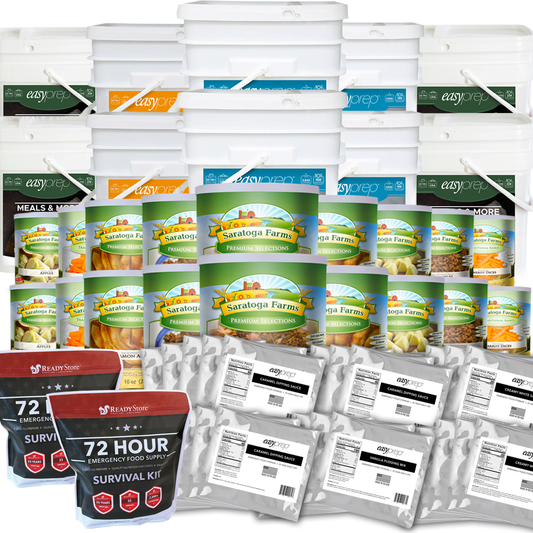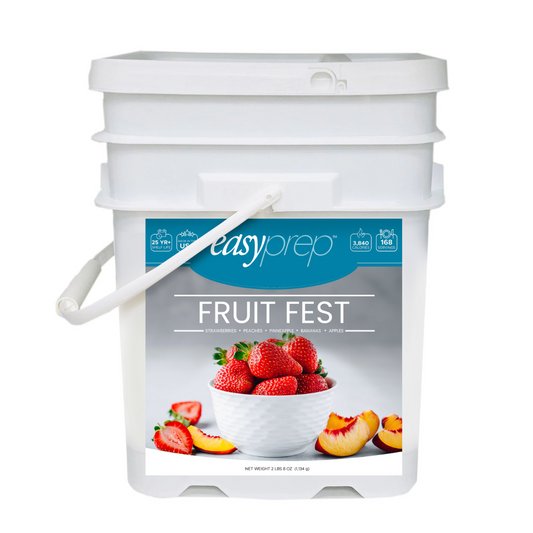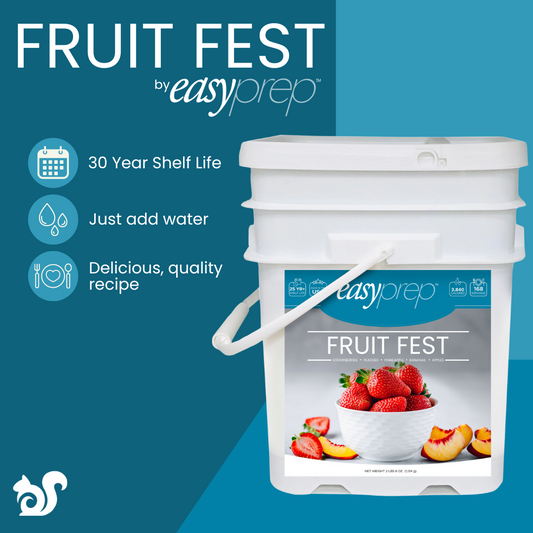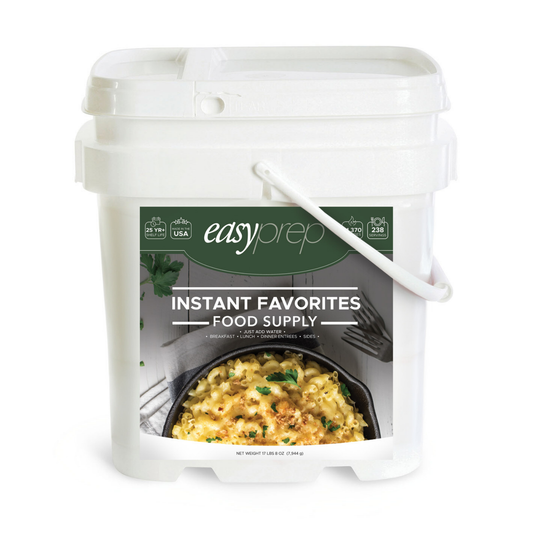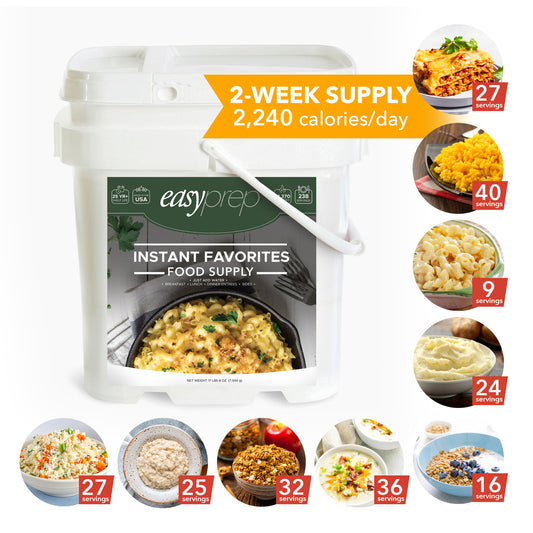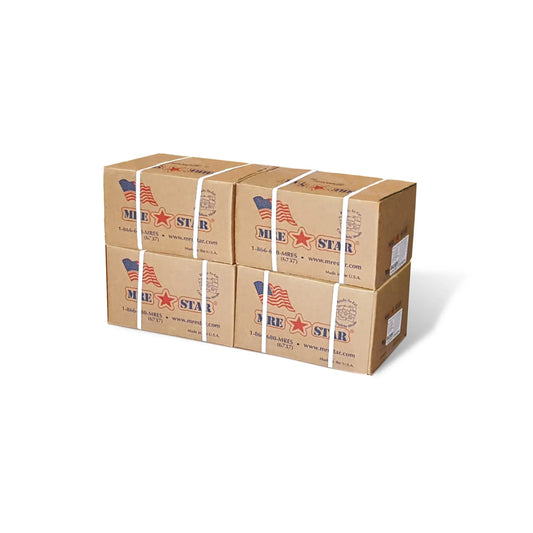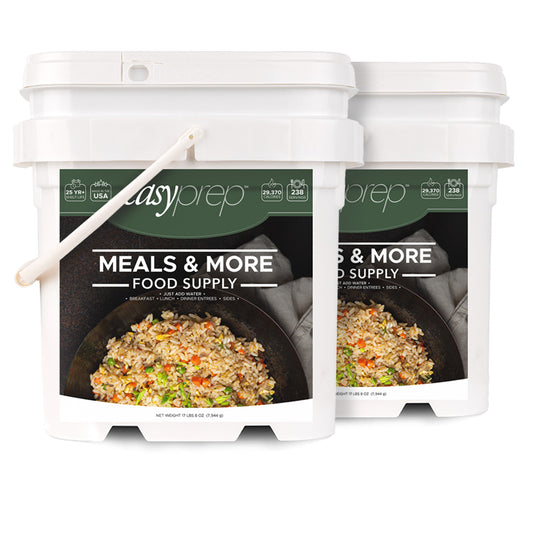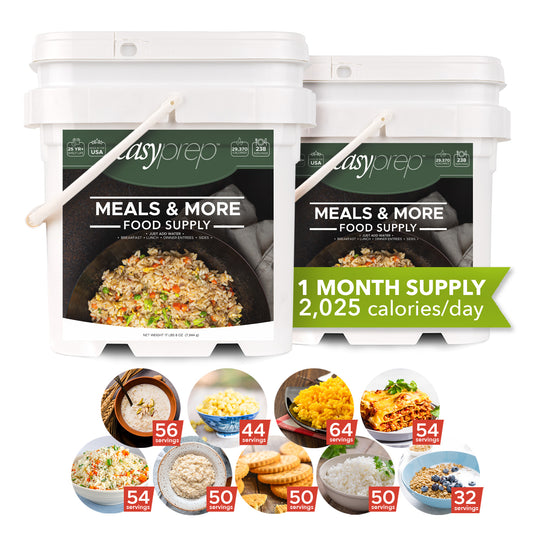How to Tap Maple Trees and Make Syrup
04 Oct 2013
Tapping maple trees in order to make syrup is a long tradition in America - dating back to the pre-Columbian era. Generations of people have tapped into maple trees to extract the yummy breakfast-enhancing liquid.
As a self-sufficient individual, you can save money and live off the land by learning how to tap maple trees for syrup. These instructions will help you identify, tap and filter the sap to create a healthy, natural breakfast syrup that your family will love.
 Choose the Right Maple Trees
The best maple trees yield in parts of the country that have sunny days and freezing nights in early spring. New England is typically the best area for this but you can do it anywhere.
You’ll need to be able to recognize a sugar maple tree. This can be hard to do.
One of the easiest ways to tell a sugar maple from other maples is by the leaves. The Norway maple is usually planted in people’s yards as a decorative tree. It has the same classic leaf style as the sugar maple - however the Norway maple leaf is much larger. The bark will also have a fine, diamond-shaped pattern that sugar maples don’t have.
The other type of maple that is commonly confused is the red maple - also known in parts as the swamp maple. During the fall, it’s easy to distinguish a red maple and a sugar maple. The red maple will turn colors. The red maple leaves will turn bright scarlet while the sugar maple’s leaves turn pink then yellow then red weeks after the red maple. The red maple’s leaves also have a more saw-toothed-edged leaf while the sugar maple leaf is more smooth.
Choose the Right Maple Trees
The best maple trees yield in parts of the country that have sunny days and freezing nights in early spring. New England is typically the best area for this but you can do it anywhere.
You’ll need to be able to recognize a sugar maple tree. This can be hard to do.
One of the easiest ways to tell a sugar maple from other maples is by the leaves. The Norway maple is usually planted in people’s yards as a decorative tree. It has the same classic leaf style as the sugar maple - however the Norway maple leaf is much larger. The bark will also have a fine, diamond-shaped pattern that sugar maples don’t have.
The other type of maple that is commonly confused is the red maple - also known in parts as the swamp maple. During the fall, it’s easy to distinguish a red maple and a sugar maple. The red maple will turn colors. The red maple leaves will turn bright scarlet while the sugar maple’s leaves turn pink then yellow then red weeks after the red maple. The red maple’s leaves also have a more saw-toothed-edged leaf while the sugar maple leaf is more smooth.
 Tools for Tapping
Before you get started, you’ll need to proper supplies. To tap for syrup, you’ll need:
• Spouts.
• You’ll need 1-5 spouts. You can typically get them in hardware stores in New England. You’ll find that they come in a few different varieties but try to look for one that has a precast hook and metal spouts
• Drill & Hammer. A hand drill with a 7/16-inch bit is best. However, you might be able to use a 3/8- or 1/2-inch bit too.
• Containers. Get several types of containers including sap buckets, plastic gallon jars or coffee cans.
• Heat. Creating maple syrup requires a lot of boiling for an extended amount of time. While the easiest way to do this would be to put it on a kitchen stove top, the sticky fumes might be a problem in the house. Many people prefer to do the boiling in the yard in an outdoor fireplace.
When to Tap
The best time to do this is late February to late March. You’ll want to pick a day that starts out sunny and has a freezing night beforehand. If you tap too early, the sprouts will dry up before the season is over. A tree will typically close off the flow of sap in four to six weeks. That will become a problem if you tap on an uncommonly warm day that is followed by freezing temperatures again. A good rule of thumb is to tap about one month before the last snow is melted.
Step by Step Process
Drilling. Use your drill to burrow 2 ½ inches into the tree. The hole should be about 2 feet above the ground. Use the hammer to gently drive the spout into the hole. (Remember to put a hook on if you are using a hookless spout.) If you drive the spout in too hard, you may split the bark and the sap will leak out in places that you don’t want it to. If you drive it in too lightly, it may not stand up to the weight you put on it.
Tools for Tapping
Before you get started, you’ll need to proper supplies. To tap for syrup, you’ll need:
• Spouts.
• You’ll need 1-5 spouts. You can typically get them in hardware stores in New England. You’ll find that they come in a few different varieties but try to look for one that has a precast hook and metal spouts
• Drill & Hammer. A hand drill with a 7/16-inch bit is best. However, you might be able to use a 3/8- or 1/2-inch bit too.
• Containers. Get several types of containers including sap buckets, plastic gallon jars or coffee cans.
• Heat. Creating maple syrup requires a lot of boiling for an extended amount of time. While the easiest way to do this would be to put it on a kitchen stove top, the sticky fumes might be a problem in the house. Many people prefer to do the boiling in the yard in an outdoor fireplace.
When to Tap
The best time to do this is late February to late March. You’ll want to pick a day that starts out sunny and has a freezing night beforehand. If you tap too early, the sprouts will dry up before the season is over. A tree will typically close off the flow of sap in four to six weeks. That will become a problem if you tap on an uncommonly warm day that is followed by freezing temperatures again. A good rule of thumb is to tap about one month before the last snow is melted.
Step by Step Process
Drilling. Use your drill to burrow 2 ½ inches into the tree. The hole should be about 2 feet above the ground. Use the hammer to gently drive the spout into the hole. (Remember to put a hook on if you are using a hookless spout.) If you drive the spout in too hard, you may split the bark and the sap will leak out in places that you don’t want it to. If you drive it in too lightly, it may not stand up to the weight you put on it.
 Wait & Collect. Hang your jug or container in under the spout so that the sap will drip into it. If you hang your spouts at 10 am, you’ll want to collect them by dinnertime. In fact, on really good days, you may have to empty them twice.
Boiling. Creating maple syrup takes a lot of sap. You’ll need about 9 gallons of sap to create a pint of syrup. However, once your sap has been collected you can start boiling. Pour your sap into a large pot and let it simmer for the night. By morning, the volume will be down by about half. By the afternoon, the volume will be down to about a quarter. As the volume decreases, you can continue to add sap.
Once the sap begins to boil down to about 1/10 of its original volume, you’ll want to start watching it more carefully. Begin to skim off the thick white foamy layers that begins to form on top. Discard that. If the heat is too high, the syrup will boil up abruptly. If you add a single drop of cream, it will die down and enable you to keep boiling.
If you’re using a candy thermometer, test when the syrup is done. It should be at about 219˚F (104˚C). If you’re not using a thermometer, you can dip an ordinary spatula into the pot. If, when you pull out the spatula, a thin “apron” forms below the spatula, the syrup is done. If it just drips back into the pot, continue to let it simmer.
Filtering. Once the syrup as aproned, you should be good to go. You can immediately use it or store it in a clean glass jar with airtight lids. However, the next day, you may notice that small sediments have collected at the bottom of the jar. Back in the day, people would just use the syrup that was above, but if you want to get rid of those sediments, you’ll need to use a filter. Commercial syrup makers use a felted-wool filter but you can just pour it through a paper coffee filter and that should help too.
Grading the Syrup. Maple syrup is graded by its color - which is usually an accurate indicator of its flavor. If you want to get super official, you can buy a commercial grading scale color swatch. However, it typically breaks down in this way:
• Fancy. Pale golden, delicately flavored.
• Grade A. Light amber, rich but mild in flavor
• Grade B. Medium amber. robust flavor
• Grade C. Dark amber, strong in flavor.
When to Stop
While you continue to collect sap, you’ll notice that the trees will slow down their production more and more as the season continues. They will even begin to change color to a lighter, pale color. If you notice the tree sap changing color it means the trees are ready to blossom and any syrup you collect after that will be useless for making syrup.
Have You Made Syrup?
How did it go for you? What tips and advice do you have for others who are trying it out for the first time? Let us know by commenting below.
Wait & Collect. Hang your jug or container in under the spout so that the sap will drip into it. If you hang your spouts at 10 am, you’ll want to collect them by dinnertime. In fact, on really good days, you may have to empty them twice.
Boiling. Creating maple syrup takes a lot of sap. You’ll need about 9 gallons of sap to create a pint of syrup. However, once your sap has been collected you can start boiling. Pour your sap into a large pot and let it simmer for the night. By morning, the volume will be down by about half. By the afternoon, the volume will be down to about a quarter. As the volume decreases, you can continue to add sap.
Once the sap begins to boil down to about 1/10 of its original volume, you’ll want to start watching it more carefully. Begin to skim off the thick white foamy layers that begins to form on top. Discard that. If the heat is too high, the syrup will boil up abruptly. If you add a single drop of cream, it will die down and enable you to keep boiling.
If you’re using a candy thermometer, test when the syrup is done. It should be at about 219˚F (104˚C). If you’re not using a thermometer, you can dip an ordinary spatula into the pot. If, when you pull out the spatula, a thin “apron” forms below the spatula, the syrup is done. If it just drips back into the pot, continue to let it simmer.
Filtering. Once the syrup as aproned, you should be good to go. You can immediately use it or store it in a clean glass jar with airtight lids. However, the next day, you may notice that small sediments have collected at the bottom of the jar. Back in the day, people would just use the syrup that was above, but if you want to get rid of those sediments, you’ll need to use a filter. Commercial syrup makers use a felted-wool filter but you can just pour it through a paper coffee filter and that should help too.
Grading the Syrup. Maple syrup is graded by its color - which is usually an accurate indicator of its flavor. If you want to get super official, you can buy a commercial grading scale color swatch. However, it typically breaks down in this way:
• Fancy. Pale golden, delicately flavored.
• Grade A. Light amber, rich but mild in flavor
• Grade B. Medium amber. robust flavor
• Grade C. Dark amber, strong in flavor.
When to Stop
While you continue to collect sap, you’ll notice that the trees will slow down their production more and more as the season continues. They will even begin to change color to a lighter, pale color. If you notice the tree sap changing color it means the trees are ready to blossom and any syrup you collect after that will be useless for making syrup.
Have You Made Syrup?
How did it go for you? What tips and advice do you have for others who are trying it out for the first time? Let us know by commenting below.
 Choose the Right Maple Trees
The best maple trees yield in parts of the country that have sunny days and freezing nights in early spring. New England is typically the best area for this but you can do it anywhere.
You’ll need to be able to recognize a sugar maple tree. This can be hard to do.
One of the easiest ways to tell a sugar maple from other maples is by the leaves. The Norway maple is usually planted in people’s yards as a decorative tree. It has the same classic leaf style as the sugar maple - however the Norway maple leaf is much larger. The bark will also have a fine, diamond-shaped pattern that sugar maples don’t have.
The other type of maple that is commonly confused is the red maple - also known in parts as the swamp maple. During the fall, it’s easy to distinguish a red maple and a sugar maple. The red maple will turn colors. The red maple leaves will turn bright scarlet while the sugar maple’s leaves turn pink then yellow then red weeks after the red maple. The red maple’s leaves also have a more saw-toothed-edged leaf while the sugar maple leaf is more smooth.
Choose the Right Maple Trees
The best maple trees yield in parts of the country that have sunny days and freezing nights in early spring. New England is typically the best area for this but you can do it anywhere.
You’ll need to be able to recognize a sugar maple tree. This can be hard to do.
One of the easiest ways to tell a sugar maple from other maples is by the leaves. The Norway maple is usually planted in people’s yards as a decorative tree. It has the same classic leaf style as the sugar maple - however the Norway maple leaf is much larger. The bark will also have a fine, diamond-shaped pattern that sugar maples don’t have.
The other type of maple that is commonly confused is the red maple - also known in parts as the swamp maple. During the fall, it’s easy to distinguish a red maple and a sugar maple. The red maple will turn colors. The red maple leaves will turn bright scarlet while the sugar maple’s leaves turn pink then yellow then red weeks after the red maple. The red maple’s leaves also have a more saw-toothed-edged leaf while the sugar maple leaf is more smooth.
 Tools for Tapping
Before you get started, you’ll need to proper supplies. To tap for syrup, you’ll need:
• Spouts.
• You’ll need 1-5 spouts. You can typically get them in hardware stores in New England. You’ll find that they come in a few different varieties but try to look for one that has a precast hook and metal spouts
• Drill & Hammer. A hand drill with a 7/16-inch bit is best. However, you might be able to use a 3/8- or 1/2-inch bit too.
• Containers. Get several types of containers including sap buckets, plastic gallon jars or coffee cans.
• Heat. Creating maple syrup requires a lot of boiling for an extended amount of time. While the easiest way to do this would be to put it on a kitchen stove top, the sticky fumes might be a problem in the house. Many people prefer to do the boiling in the yard in an outdoor fireplace.
When to Tap
The best time to do this is late February to late March. You’ll want to pick a day that starts out sunny and has a freezing night beforehand. If you tap too early, the sprouts will dry up before the season is over. A tree will typically close off the flow of sap in four to six weeks. That will become a problem if you tap on an uncommonly warm day that is followed by freezing temperatures again. A good rule of thumb is to tap about one month before the last snow is melted.
Step by Step Process
Drilling. Use your drill to burrow 2 ½ inches into the tree. The hole should be about 2 feet above the ground. Use the hammer to gently drive the spout into the hole. (Remember to put a hook on if you are using a hookless spout.) If you drive the spout in too hard, you may split the bark and the sap will leak out in places that you don’t want it to. If you drive it in too lightly, it may not stand up to the weight you put on it.
Tools for Tapping
Before you get started, you’ll need to proper supplies. To tap for syrup, you’ll need:
• Spouts.
• You’ll need 1-5 spouts. You can typically get them in hardware stores in New England. You’ll find that they come in a few different varieties but try to look for one that has a precast hook and metal spouts
• Drill & Hammer. A hand drill with a 7/16-inch bit is best. However, you might be able to use a 3/8- or 1/2-inch bit too.
• Containers. Get several types of containers including sap buckets, plastic gallon jars or coffee cans.
• Heat. Creating maple syrup requires a lot of boiling for an extended amount of time. While the easiest way to do this would be to put it on a kitchen stove top, the sticky fumes might be a problem in the house. Many people prefer to do the boiling in the yard in an outdoor fireplace.
When to Tap
The best time to do this is late February to late March. You’ll want to pick a day that starts out sunny and has a freezing night beforehand. If you tap too early, the sprouts will dry up before the season is over. A tree will typically close off the flow of sap in four to six weeks. That will become a problem if you tap on an uncommonly warm day that is followed by freezing temperatures again. A good rule of thumb is to tap about one month before the last snow is melted.
Step by Step Process
Drilling. Use your drill to burrow 2 ½ inches into the tree. The hole should be about 2 feet above the ground. Use the hammer to gently drive the spout into the hole. (Remember to put a hook on if you are using a hookless spout.) If you drive the spout in too hard, you may split the bark and the sap will leak out in places that you don’t want it to. If you drive it in too lightly, it may not stand up to the weight you put on it.
 Wait & Collect. Hang your jug or container in under the spout so that the sap will drip into it. If you hang your spouts at 10 am, you’ll want to collect them by dinnertime. In fact, on really good days, you may have to empty them twice.
Boiling. Creating maple syrup takes a lot of sap. You’ll need about 9 gallons of sap to create a pint of syrup. However, once your sap has been collected you can start boiling. Pour your sap into a large pot and let it simmer for the night. By morning, the volume will be down by about half. By the afternoon, the volume will be down to about a quarter. As the volume decreases, you can continue to add sap.
Once the sap begins to boil down to about 1/10 of its original volume, you’ll want to start watching it more carefully. Begin to skim off the thick white foamy layers that begins to form on top. Discard that. If the heat is too high, the syrup will boil up abruptly. If you add a single drop of cream, it will die down and enable you to keep boiling.
If you’re using a candy thermometer, test when the syrup is done. It should be at about 219˚F (104˚C). If you’re not using a thermometer, you can dip an ordinary spatula into the pot. If, when you pull out the spatula, a thin “apron” forms below the spatula, the syrup is done. If it just drips back into the pot, continue to let it simmer.
Filtering. Once the syrup as aproned, you should be good to go. You can immediately use it or store it in a clean glass jar with airtight lids. However, the next day, you may notice that small sediments have collected at the bottom of the jar. Back in the day, people would just use the syrup that was above, but if you want to get rid of those sediments, you’ll need to use a filter. Commercial syrup makers use a felted-wool filter but you can just pour it through a paper coffee filter and that should help too.
Grading the Syrup. Maple syrup is graded by its color - which is usually an accurate indicator of its flavor. If you want to get super official, you can buy a commercial grading scale color swatch. However, it typically breaks down in this way:
• Fancy. Pale golden, delicately flavored.
• Grade A. Light amber, rich but mild in flavor
• Grade B. Medium amber. robust flavor
• Grade C. Dark amber, strong in flavor.
When to Stop
While you continue to collect sap, you’ll notice that the trees will slow down their production more and more as the season continues. They will even begin to change color to a lighter, pale color. If you notice the tree sap changing color it means the trees are ready to blossom and any syrup you collect after that will be useless for making syrup.
Have You Made Syrup?
How did it go for you? What tips and advice do you have for others who are trying it out for the first time? Let us know by commenting below.
Wait & Collect. Hang your jug or container in under the spout so that the sap will drip into it. If you hang your spouts at 10 am, you’ll want to collect them by dinnertime. In fact, on really good days, you may have to empty them twice.
Boiling. Creating maple syrup takes a lot of sap. You’ll need about 9 gallons of sap to create a pint of syrup. However, once your sap has been collected you can start boiling. Pour your sap into a large pot and let it simmer for the night. By morning, the volume will be down by about half. By the afternoon, the volume will be down to about a quarter. As the volume decreases, you can continue to add sap.
Once the sap begins to boil down to about 1/10 of its original volume, you’ll want to start watching it more carefully. Begin to skim off the thick white foamy layers that begins to form on top. Discard that. If the heat is too high, the syrup will boil up abruptly. If you add a single drop of cream, it will die down and enable you to keep boiling.
If you’re using a candy thermometer, test when the syrup is done. It should be at about 219˚F (104˚C). If you’re not using a thermometer, you can dip an ordinary spatula into the pot. If, when you pull out the spatula, a thin “apron” forms below the spatula, the syrup is done. If it just drips back into the pot, continue to let it simmer.
Filtering. Once the syrup as aproned, you should be good to go. You can immediately use it or store it in a clean glass jar with airtight lids. However, the next day, you may notice that small sediments have collected at the bottom of the jar. Back in the day, people would just use the syrup that was above, but if you want to get rid of those sediments, you’ll need to use a filter. Commercial syrup makers use a felted-wool filter but you can just pour it through a paper coffee filter and that should help too.
Grading the Syrup. Maple syrup is graded by its color - which is usually an accurate indicator of its flavor. If you want to get super official, you can buy a commercial grading scale color swatch. However, it typically breaks down in this way:
• Fancy. Pale golden, delicately flavored.
• Grade A. Light amber, rich but mild in flavor
• Grade B. Medium amber. robust flavor
• Grade C. Dark amber, strong in flavor.
When to Stop
While you continue to collect sap, you’ll notice that the trees will slow down their production more and more as the season continues. They will even begin to change color to a lighter, pale color. If you notice the tree sap changing color it means the trees are ready to blossom and any syrup you collect after that will be useless for making syrup.
Have You Made Syrup?
How did it go for you? What tips and advice do you have for others who are trying it out for the first time? Let us know by commenting below.


